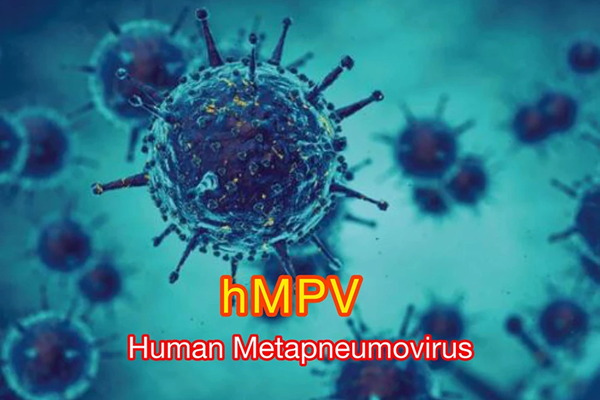
The Nigeria Centre for Disease Control and Prevention (NCDC) has reassured Nigerians of its commitment to safeguarding public health following reports of a Human Metapneumovirus (HMPV) outbreak in China and other regions.
Director-general of the NCDC, Dr. Jide Idris made this statement on Tuesday in Abuja, emphasising the agency’s readiness to address potential threats.
Science Nigeria reports that the HMPV outbreak has overwhelmed hospitals in China, sparking global concern.
Videos circulating on social media depict overcrowded waiting rooms and strained healthcare systems, raising alarms in parts of Asia and beyond.
Idris disclosed that the NCDC is collaborating with the Federal Ministry of Health and Social Welfare to monitor global developments and take proactive measures to ensure Nigeria remains prepared.
Dispelling public concerns, he clarified that the World Health Organisation (WHO) has not declared HMPV a public health emergency of international concern (PHEIC).
“The WHO has not made such a declaration,” he said, adding that Nigeria’s National Influenza Sentinel Surveillance (NISS) system has not detected any unusual increase in respiratory infections locally.
Although no cases of HMPV have been reported in Nigeria, Idris said the NCDC has ramped up surveillance efforts nationwide.
The DG confirmed that the agency has enhanced monitoring for respiratory infections, including HMPV, at sentinel sites across the country.
He also urged healthcare providers to report any unusual spikes in respiratory illnesses, while stressing the importance of preventive measures such as regular handwashing, wearing masks in crowded spaces and staying home when unwell.
The WHO has acknowledged the rise in acute respiratory infections in China, particularly among children, as reported by China’s National Health Commission.
However, the UN health agency has not released specific data on HMPV.
Health experts describe HMPV as a known virus with established immunity in the population.
While it can cause severe illness in vulnerable groups, it does not pose the same global threat as COVID-19.
Meanwhile, India’s Health Ministry held an emergency meeting to review the rising cases of HMPV, reassuring the public that there is no immediate cause for alarm.
Similarly, Malaysia has reported a notable increase in cases and is stepping up monitoring efforts.
China, on the other hand, has downplayed the outbreak, describing it as less severe than in previous years and attributing the rise in infections to the winter season.
Despite reassurances, concerns persist over China’s transparency, drawing comparisons to the initial handling of the COVID-19 outbreak in 2019.
Dr. Sanjaya Senanayake, an infectious disease expert from the Australian National University, underscored the need for data sharing.
“It is vital for China to share its data on this outbreak in a timely manner.
“We need genomic data confirming that HMPV is the culprit and that there aren’t any significant mutations of concern. Such data will also guide vaccine development,” Senanayake said.
In the United States, the Centers for Disease Control and Prevention (CDC) reported a rise in HMPV cases, with positive test rates doubling in December.
Nearly 300 cases were recorded in the last week of the month.
The USCDC, however, stated that the outbreak in China is “not a cause for concern” for the US but confirmed ongoing monitoring of developments.
Recall that HMPV, first identified in 2001, is part of the ‘pneumoviridae’ family, which also includes respiratory syncytial virus (RSV).
The virus causes upper and lower respiratory infections with symptoms similar to a cold or flu, such as coughing, fever, sore throat and, in severe cases, wheezing or difficulty breathing.
The virus poses the highest risk to young children, the elderly and people with weakened immune systems or chronic respiratory conditions like asthma or COPD.
HMPV spreads through respiratory droplets from coughing or sneezing, close contact such as handshakes, and touching contaminated surfaces before touching the face.
Meanwhile, the USCDC advised the public to adopt the following measures to reduce the risk of HMPV and other respiratory infections:
– “Wash hands regularly with soap and water for at least 20 seconds.
– Avoid touching the face with unwashed hands.
– Wear masks in crowded areas during outbreaks.
– Stay home when unwell to prevent spreading the virus.”
The NCDC has joined international calls for transparency and collaboration to mitigate potential health threats posed by HMPV.
As global health agencies monitor developments, the emphasis remains on preventive measures and vigilance to protect vulnerable populations.
Science Nigeria reports that while HMPV is not a novel virus, its potential to cause severe illness in at-risk groups underscores the importance of public health preparedness and international cooperation.

